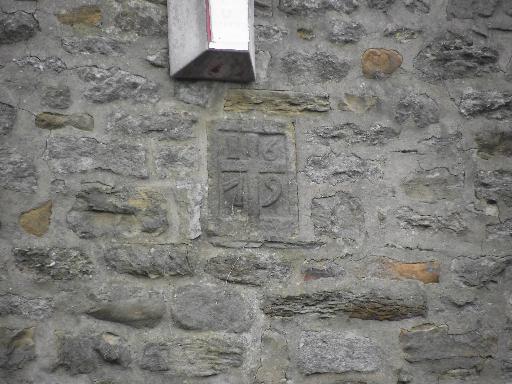| JOURNAL 2022 |
| North Craven Heritage Trust |
It is always a pleasure to receive feedback from readers of the Journal, particularly when it prompts further research. Perhaps the following may spur others into uncovering some further aspects of our hidden past.
An unknown painter
The cover of the 2020 Journal showed a portrait of Richard Clapham (1791-1856) which was possibly painted by G. Brown. My attempts to track him down in art reference books led nowhere. However, Mary Slater suggested that the mystery artist could be George Brown, a blacksmith of Austwick. Perhaps he was a talented amateur who remained unnoticed and unrecorded by the art world. The Clapham parish register records his birth in 1823 as a son of Thomas and Catherine Brown. The 1851 census shows that George was living with his parents and five siblings in Austwick. Both he and his brother, Thomas, were working with his father as blacksmiths. At some point he left home and in 1856 he married Ann Lamb in Toxteth, Liverpool. According to the marriage certificate he was a police officer. Subsequent censuses show that he continued to live in Toxteth with a growing family. By 1891 he had retired from the police force and he died in 1894. The probate record describes him as ‘a superannuated police constable’ with effects valued at £69. Though we cannot be absolutely certain that this is our unknown artist he is at present our only candidate. Did he paint other local people, did he continue his interest in art and perhaps one of his children showed a talent for painting? So many questions and plenty of opportunities for further delving.
A family link
The 2021 Journal contained a review of a book written by Ian Hodkinson (page 12) on the early naturalists of the Lake District. One of these, John Gough, had written an explanation of the workings of the Ebbing and Flowing well at Giggleswick and had also used bird migration data from Settle. So what was the link between Kendal, where he lived, and Settle? Pam Jordan informed me that John’s sister, Rachel, lived in Settle. She had married William Birkbeck of the Settle Quaker family. She also mentioned a reference to Rachel in Brayshaw and Robinson’s ‘A History of the Ancient Parish of Giggleswick’. It was claimed that Rachel’s brother was Charles Gough ‘whose death on Helvellyn was immortalised by Wordsworth’ (page 175). For those who have not heard of Charles Gough the following is a succinct version of the story. Charles was visiting the Lake District from Manchester in April 1805 and decided to walk over Helvellyn to Grasmere, taking his dog (Foxie) with him. He was never seen alive again but his body was discovered three months later at Red Tarn with Foxie still by his side. There was little left of the body and it was suspected that Foxie had eaten her master but this was disputed at the time. The incident was immortalised by Wordsworth and Walter Scott in poetry and by several artists. Much more details can be found in the Wordsworth Trust’s ‘The Unfortunate Tourist of Helvellyn and his Faithful Dog’. I was doing some research on John Gough and it took several hours to establish that Rachel was not the sister of Charles and that Brayshaw was incorrect. Although they were related I was unable to establish the link through the Quaker records. So what happened to Foxie? She went to live with John Gough’s family in Kendal!
Religious symbolism
A rather speculative article appeared in the 2021 Journal about possible recusant symbols at Bank Barn in Lawkland. Whilst thumbing through a copy of Tom Merrall’s ‘A History of Hellifield’ (1949) I came across another couple of examples of crosses being incorporated into the fabric of buildings. He recorded that crosses had been built into the gable walls of Chapel House Farm and Auction Mart Farm. The gable of Chapel House (as it is now called) is obscured by a hedge, but plate ii in the book clearly shows a Patriarchal cross. This is a variant of the Latin cross, with a smaller crossbar placed above the main one. It is not a cross of the Order of St John of Jerusalem as described by Merrall. Mart Farm (as it is now called) has a box type door head (1679 E.M.) and a cross on the gable wall which can be clearly be seen from the road (Fig 1). Of course this does not get us any closer to an explanation as to where these crosses came from or their significance, but it does show that the one at Bank Barn is not the only one in the area. Perhaps this might prompt further research by one of our readers.
